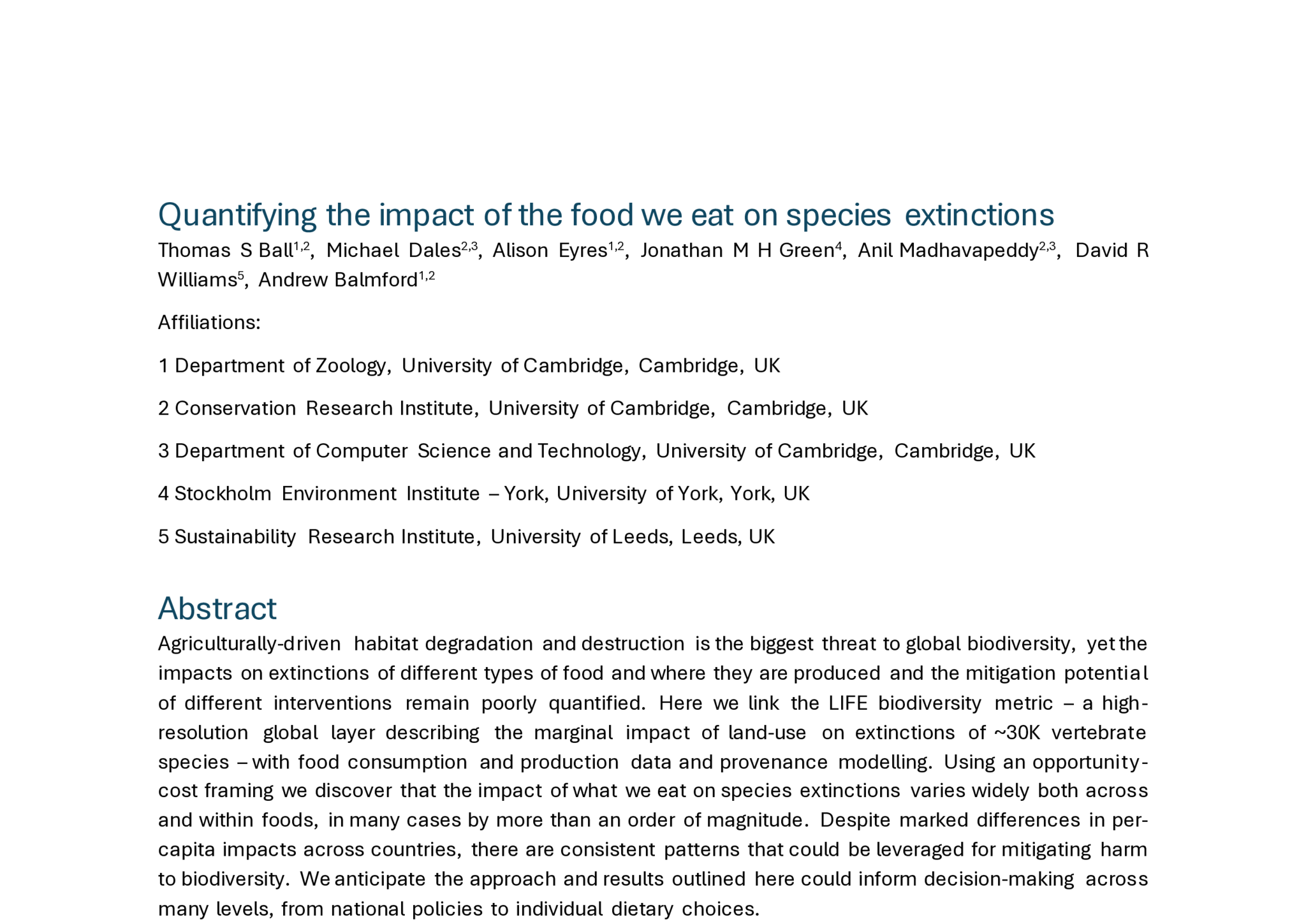Food impacts on species extinction risks can vary by three orders of magnitude
Thomas Ball, Michael Dales, Alison Eyres, Jonathan Green, Anil Madhavapeddy, David Williams, and Andrew Balmford.
Journal paper in Nature Food.
Agriculturally-driven habitat degradation and destruction is the biggest threat to global biodiversity, yet the impacts on extinctions of different types of food and where they are produced and the mitigation potential of different interventions remain poorly quantified.
Here we link the
Despite marked differences in per-capita impacts across countries, there are consistent patterns that could be leveraged for mitigating harm to biodiversity. In particular, we find that animal products and commodities grown in the tropics are generally much more impactful than staple crops and vegetables grown elsewhere. We anticipate the approach and results outlined here could inform decision- making across many levels, from national policies to individual dietary choices.
There is an interactive data explorer available.
Older versions
There are earlier revisions of this paper available below for historical reasons. Please cite the latest version of the paper above instead of these.
This is v3 of the publication from Jun 2025.
This is v2 of the publication from Feb 2025.
This is v1 of the publication from May 2024.
